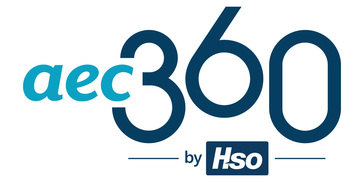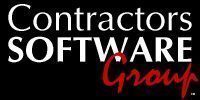Description

aec360

Leap
Comprehensive Overview: aec360 vs Leap
To provide a comprehensive overview of aec360 and Leap, I'll first outline what these products generally cover, as they aren't directly comparable but can be understood within their respective contexts in terms of functionalities and market focus. Since product details can change over time, it's advisable to refer to the respective companies' official resources for the most current insights.
a) Primary Functions and Target Markets
aec360:
aec360 is a comprehensive business management suite designed specifically for the architecture, engineering, and construction (AEC) industry. It's often marketed as a CRM (Customer Relationship Management) and ERP (Enterprise Resource Planning) solution that integrates with Microsoft Dynamics 365.
-
Primary Functions:
- Project management
- Financial management
- Business development
- Resource management
- Client relationship management
-
Target Markets:
- Architectural firms
- Engineering firms
- Construction companies
Leap:
Leap is typically known as a mobile application and software platform aimed at streamlining the sales process for home services contractors. It helps sales teams manage in-home sales processes efficiently, ensuring accuracy and improving communication.
-
Primary Functions:
- Digital contracts and estimates
- Document management
- Sales presentation tools
- Payment processing and financing options
-
Target Markets:
- Home improvement contractors
- Roofing companies
- Window and door installers
- General contractors in home remodeling
b) Market Share and User Base
Comparing the market share and user base of aec360 and Leap requires understanding their niche markets:
-
aec360:
- Part of a specialized suite for the AEC industry, its adoption typically aligns with larger firms that require deep integration with existing Microsoft products. Its user base is smaller than a general CRM like Salesforce, but within its niche, it enjoys relevance due to industry-specific features.
-
Leap:
- Leap, as a sales tool for home services contractors, caters to a different scale of the business. It is not targeted at enterprise-level operations but is instead used by small to medium-sized businesses aiming to modernize their sales processes. The user base might be broader in the sense of small businesses but less concentrated in a specific enterprise segment.
c) Key Differentiating Factors
-
aec360:
- Tailored specifically for the AEC industry, it provides industry-specific tools that general CRM or ERP solutions do not.
- Extensive integration with Microsoft Dynamics 365, making it a suitable choice for firms already invested in Microsoft's ecosystem.
- Focus on end-to-end business processes within the AEC industry, including detailed project management and financial modules.
-
Leap:
- Designed for field sales with a mobile-first approach, making it particularly useful for sales teams working directly from job sites or customer homes.
- Simplicity and ease of use for smaller or mid-sized businesses without complex IT infrastructures.
- Emphasis on digital transformation of manual processes, like paper contracts and estimates, tailored for home service contractors.
In conclusion, aec360 and Leap serve distinct sectors and address different business needs, making them non-direct competitors. Each has carved out a niche based on the specific demands of their target markets: large projects and resource management for aec360 versus sales process optimization for home service contractors with Leap.
Contact Info

Year founded :
2023
+44 20 3973 1926
Not Available
United Kingdom
http://www.linkedin.com/company/aec360-limited

Year founded :
2019
Not Available
Not Available
Chile
Not Available
Feature Similarity Breakdown: aec360, Leap
To compare aec360 and Leap effectively, especially in terms of feature similarity, we’ll break down the query into the core areas you've asked about. Note that due to the variations in features and information available up to my training cutoff, specifics may have evolved.
a) Core Features in Common
-
Customer Relationship Management (CRM):
- Both aec360 and Leap include CRM functionalities that allow businesses to manage client interactions, track leads, and ensure customer satisfaction through streamlined communication and data management.
-
Project Management:
- Each platform provides tools to manage and oversee project timelines, deliverables, and resources, which is crucial for their target markets, such as construction and design firms for aec360.
-
Integration Capabilities:
- Both offer integrations with other enterprise software, enabling synchronization across platforms to ensure seamless workflows. This includes tools commonly used in their respective industries like accounting and communication software.
-
Data Analytics and Reporting:
- Data-driven insights and robust reporting tools are available in both, helping businesses make informed decisions based on project data and customer interactions.
b) User Interface Comparison
-
aec360:
- Typically tailored towards the engineering and construction sector, aec360’s user interface is designed to suit industry-specific workflows. It generally incorporates a more task-driven layout to accommodate project management and CRM functionalities simultaneously.
-
Leap:
- Leap tends to focus more on simplifying sales processes with an interface that is optimized for ease of use and speed. It emphasizes reducing manual paperwork through digital solutions, often with an intuitive and mobile-friendly interface, suiting sales processes on the go.
c) Unique Features
-
aec360:
- AEC Industry-Specific Tools: Tailored specifically for the architecture, engineering, and construction sectors, it offers features like bid management, document management specific to engineering projects, and tools for managing compliance and industry standards.
- Microsoft Dynamics Integration: Built on the Microsoft Dynamics platform, aec360 provides powerful integration with other Microsoft apps and tools, giving users a familiar environment if they are accustomed to Microsoft products.
-
Leap:
- Proposal Generation and Digital Contracting: Leap excels at digital sales, offering features that facilitate quick generation of proposals and the execution of digital contracts directly from its platform, reducing the time and error associated with traditional paperwork.
- Mobile Optimization: Designed with a strong emphasis on mobile usability, Leap supports field sales operations with capabilities that allow users to run a substantial part of their sales process from tablets or smartphones.
In conclusion, while aec360 and Leap share core functionalities like CRM and project management, they diverge significantly in their user interfaces and unique features, largely due to their targeting of different industry needs and technological integrations. aec360 is more embedded in the Microsoft ecosystem with a focus on construction and engineering, while Leap centers on enhancing the sales process with strong mobile capabilities.
Features

Not Available

Comprehensive Analytics
User-Friendly Interface
Robust Security
Best Fit Use Cases: aec360, Leap
aec360 and Leap are both specialized software solutions catering to distinct needs within industries such as architecture, engineering, and construction (AEC), among others. Here’s an overview of the best fit use cases for each:
aec360
a) Best Fit Use Cases:
- Types of Businesses or Projects:
- Architecture, Engineering, and Construction Firms: aec360 is tailored specifically for firms in the AEC industry, providing modules that handle project management, client engagement, resource planning, and other industry-specific needs.
- Large Multi-disciplinary Firms: With its comprehensive integration capabilities, aec360 suits large firms that need a unified system for managing various functions including human resources, financials, and customer relationships.
- Project-centric Organizations: Organizations that undertake complex, project-based work can benefit from the project management features of aec360, offering insights into project progress, budgeting, and team collaboration.
d) Catering to Different Industry Verticals or Company Sizes:
- Verticals: aec360 is deeply specialized for the AEC industry, including sub-sectors like design, consulting engineering, and construction services. Its features support compliance, client proposals, contract management, and resource planning specific to these fields.
- Company Sizes: While it is highly beneficial for medium to large enterprises due to its robust and comprehensive suite, aec360 can also be adapted for growing firms looking to scale their operations efficiently.
Leap
b) Best Fit Use Cases:
- Contractors in Home Improvement or Renovation Industries:
- Small to Medium-sized Contracting Businesses: Leap is designed for contractors focusing on home improvement projects such as roofing, siding, and interior renovations. It helps streamline sales processes with its mobile-first approach.
- Sales-centric Teams: Companies that rely heavily on in-field sales representatives find Leap useful for managing estimates, contracts, and customer interactions directly from a mobile device.
d) Catering to Different Industry Verticals or Company Sizes:
- Verticals: Leap is designed for industries that require in-home sales and consultations, such as roofing, windows, siding, and other home improvement trades. Its tools are geared towards enhancing the sales lifecycle, from lead capturing to contract signing.
- Company Sizes: Leap is optimal for small to medium-sized enterprises (SMEs) focusing on improving sales efficiency and accuracy. Its mobile app is particularly useful for companies with distributed or mobile sales teams, where quick turnaround on estimates and contracts is crucial.
Summary
In summary, aec360 is best suited for larger, project-intensive firms in the architecture, engineering, and construction industries, providing a holistic project management and CRM solution. On the other hand, Leap specifically caters to home improvement contractors who need an agile, mobile-first sales tool to streamline their sales processes and engage with customers effectively. Each tool is tailored to different functionalities and scales, allowing businesses to choose according to their operational focus and industry requirements.
Pricing

Pricing Not Available

Pricing Not Available
Metrics History
Metrics History
Comparing undefined across companies
Conclusion & Final Verdict: aec360 vs Leap
When evaluating aec360 and Leap, several factors must be considered to determine which product offers the best overall value and to provide targeted recommendations for users trying to decide between the two. Both products cater to specific professional needs, often within industry contexts such as architecture, engineering, and construction for aec360 or financial transparency and project management for Leap.
Conclusion and Final Verdict
a) Best Overall Value:
- aec360: Generally offers the best value for firms heavily engaged in architecture, engineering, and construction due to its tailored features addressing industry-specific requirements, such as client management, project delivery, and finance workflows. Its integration capabilities with Microsoft Dynamics 365 can be a significant advantage for users already invested in Microsoft's ecosystem.
- Leap: Provides superior value for users who prioritize streamlined project management and financial tracking across diverse industries. Its user-friendly platform with robust analytics and reporting tools can be more beneficial for organizations that require less specialized but comprehensive project oversight.
b) Pros and Cons of Each Product:
-
aec360:
- Pros:
- Custom-built for the AEC industry, offering industry-specific features.
- Deep integration with Microsoft Dynamics 365, enhancing its scalability and functionality.
- Strong CRM and ERP capabilities that are aligned with the needs of AEC firms.
- Cons:
- May be overly complex for users outside of AEC or those not fully utilizing Dynamics 365.
- Potentially higher cost due to industry-specific customization.
- Pros:
-
Leap:
- Pros:
- Versatile and applicable across multiple industries.
- Provides intuitive project management and seamless financial management tools.
- Easy to onboard and use with a more simplified user interface.
- Cons:
- May lack the depth of industry-specific tools present in aec360 for AEC-based firms.
- Integrations might not be as extensive as those seen with aec360 in some enterprise environments.
- Pros:
c) Recommendations for Users:
-
Identify Industry Needs:
- If your organization is deeply embedded in the architecture, engineering, and construction industry, aec360 would likely offer more tailored functionalities specific to your operational needs.
- For businesses requiring effective project management without the necessity of industry-specific features, Leap could provide a more straightforward and cost-effective solution.
-
Evaluate Existing Infrastructure:
- Companies already leveraging Microsoft Dynamics 365 would naturally find aec360 complementary and beneficial, maximizing existing technology investments.
- Conversely, organizations seeking a lighter, more flexible integration with diverse third-party applications might find Leap more adaptive.
-
Consider Budget and Scale:
- Larger firms with the capacity to invest in robust, niche technologies may find value in aec360’s comprehensive offerings tailored for the AEC industry.
- Smaller to mid-sized firms, or those requiring broad project management capabilities without deep industry integrations, might prefer the simplicity and cost-effectiveness of Leap.
Ultimately, the decision between aec360 and Leap should be guided by specific organizational needs, industry focus, and existing technological commitments.
Add to compare
Add similar companies



